San Fermin
A Frenzied Dance of Bulls and Tradition
2026/07/05 - 2026/07/13
Every July, the streets of Pamplona, Spain, are enveloped in a sea of red and white as the San Fermín festival takes over the city. For nine days, from July 6 to 14, this ancient celebration transforms the capital of Navarre into a non-stop feast, attracting over a million visitors from around the world. With its breathtaking bull runs, vibrant parades, and infectious festive atmosphere, San Fermín offers a unique opportunity to experience Spanish culture and tradition like no other.
Main Attractions
Chupinazo: The Firework that Marks the Beginning of the Festival
The Chupinazo, a crucial event signaling the official start of the San Fermín, takes place at noon on July 6. Thousands of people gather in the Plaza Consistorial, filling the air with anticipation and excitement. A rocket firework is launched high into the sky from the balcony of the town hall, and its thunderous sound reverberates throughout the square. This launch marks the opening of the festival, and in an instant, the crowd erupts into cheers. White shirts are stained with sangria, and the scent of wine mingles with the summer air as the curtain rises on nine days of festivities, turning Pamplona into a city that never sleeps.
Encierro: The Traditional Bull Run
The Encierro, or bull run, is the most important ritual of the San Fermín festival, taking place every morning at 8:00 a.m. from July 7 to 14. Six fighting bulls (mostly black) and six steers (mainly white and brown) race down an 825-meter course, with hundreds of brave participants running ahead of them. This short yet thrilling event, lasting around three minutes, takes place on a temporary wooden-fenced route 4-5 meters wide in Pamplona's old town. Before running, participants pray three times to a small statue of Saint Fermín, seeking safety. As the ground shakes and the air fills with the sounds of hooves, bells, and collective gasps from spectators, an ancient dance between humans and bulls unfolds, with the scent of fear and adrenaline lingering in the air. Participants under 18 are prohibited, and this traditional event, governed by strict rules, is considered a testament to courage.
The Procession of San Fermín: A Solemn Ceremony Honoring the Saint
On July 7, the festival's religious roots take center stage with the "Procession of San Fermín." A 15th-century statue of Saint Fermín is carried through the old town, accompanied by clergy, civic leaders, dancers, and street performers. This procession, which lasts about an hour and a half, sees thousands of Pamplona residents joining in. The air is filled with the sweet scent of incense and the melodies of traditional jota (an ancient dance), while giant papier-mâché figures known as "Gigantes" tower over the crowd, delighting onlookers as they swirl and dance. The throwing of roses into the Well of Saint Cernin and the tolling of the bell named "Maria" at the cathedral symbolize the solemnity of the festival.
Pobre de Mí: The Ceremony Marking the End of the Festival
At midnight on July 14, the nine-day festival of fervor concludes with the "Pobre de Mí" ("Poor Me") ceremony. Thousands of people gather in front of the town hall, holding candles, singing the melancholy song, "Pobre de Mí, Pobre de Mí, que se han acabado las fiestas de San Fermín" ("Poor me, poor me, the San Fermín festival has come to an end"). The mayor officially declares the end of the festival, and participants remove their red neckerchiefs (pañuelos). As the last note fades away, fireworks light up the night sky, and their cracking sound serves as a final farewell to the nine-day celebration. This ceremony is a poignant moment, lamenting the end of the festival while vowing to meet again next year.
Festival Attire and Local Cuisine: A Feast of Red and White
During the festival, Pamplona becomes a sea of red and white. Participants don traditional attire: white pants and shirts, a red neckerchief (pañuelo), and a red sash (faja). The red scarf symbolizes the martyrdom of Saint Fermín. The streets are filled with the aromas of local cuisine; the sound of savory chorizo sizzling on the grill mingles with the sweet scent of churros con chocolate wafting from food stalls. Local bars are packed with people enjoying pintxos (Basque-style tapas) and kalimotxo (a drink made of red wine and cola). For these nine days, Pamplona becomes a gastronomic celebration, showcasing the richness of Spanish food culture.
Cultural and Historical Background
The origins of San Fermín date back to the Middle Ages, combining three separate festivities: a religious ceremony honoring Saint Fermín, the first bishop of Pamplona; an annual trade fair; and bullfighting events. In 1591, these elements were merged into one festival, moving it to July to take advantage of better weather.
For the people of Pamplona and Navarre, the San Fermín festival is more than just an event; it is a profound expression of cultural identity and continuity. The festival strengthens community bonds, celebrates local traditions, and serves as a link between the past and the present. Despite controversies surrounding the bull runs, San Fermín remains a beloved celebration, attracting participants from all walks of life, united by their desire to experience the unique magic of this centuries-old festival.
Participants Voices
I came to Pamplona with my college friends. As soon as we stepped into the Plaza Consistorial to witness the Chupinazo, we were swept away by a wave of energy. Strangers hugged me, poured wine over my head—it was chaos in the best possible way. Then came the bull run. Standing at Dead Man's Corner, my heart was pounding as I heard the bulls approaching—it was the most terrifying and exhilarating moment of my life. I didn’t run in the end, but the entire spectacle is something I will never forget.
I've been running with the bulls for 20 years, and every Encierro feels special. One year, I ran alongside a young Australian who was trembling with fear. I told him, 'Respect the bulls, but don’t fear them. Before the horns, we are all equal.' As we sprinted down Calle Estafeta, the adrenaline surged, as always. When we safely reached the bullring, I saw the pure joy and relief on his face, and I remembered why I do this every year. It’s not about boasting; it’s about confronting your fears and feeling truly alive.
Fun Facts
- The tradition of wearing white clothing with a red scarf was inspired by the attire of the butchers who were the first to run with the bulls.
- Ernest Hemingway's novel "The Sun Also Rises" popularized the San Fermín festival internationally, leading to a surge in tourism.
- The bulls running in the Encierro are the same ones that fight in the bullring later that day.
- On average, 50 to 100 people are injured during the bull runs each year, but fatalities are rare (16 recorded since 1910).
- During the festival, over 15,000 bottles of champagne, 50,000 liters of wine, and 400,000 liters of beer are consumed each year.
It is considered one of Spain's three major festivals, along with the Feria de Abril in Seville and the Fallas of Valencia.
Festival Date
The San Fermín is held annually from July 6 to July 14.
The event schedule is subject to change. Please check the official website for the most up-to-date information.
Media
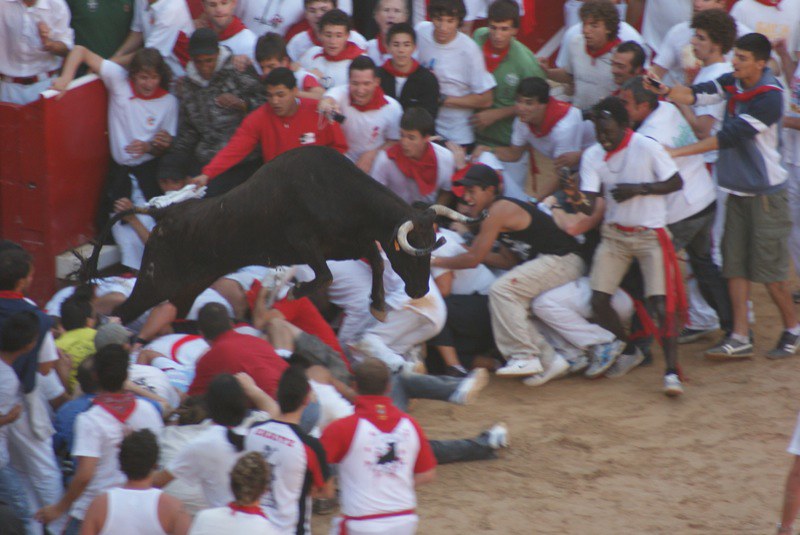
photo by Nicholas Cole
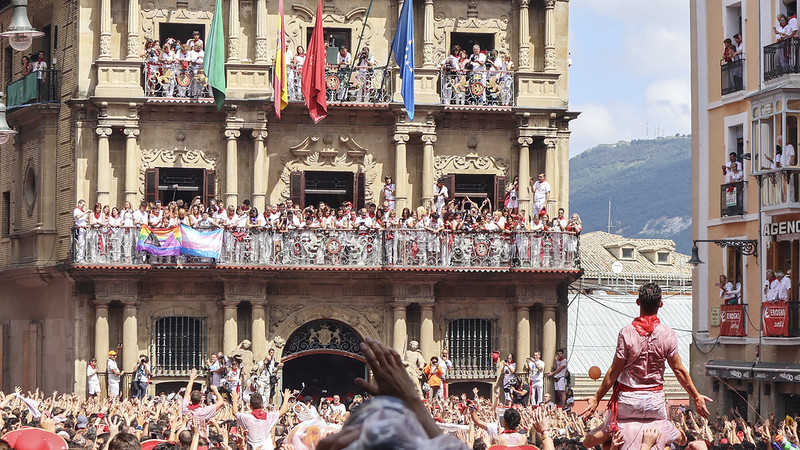
photo by San Fermin Pamplona Navarra
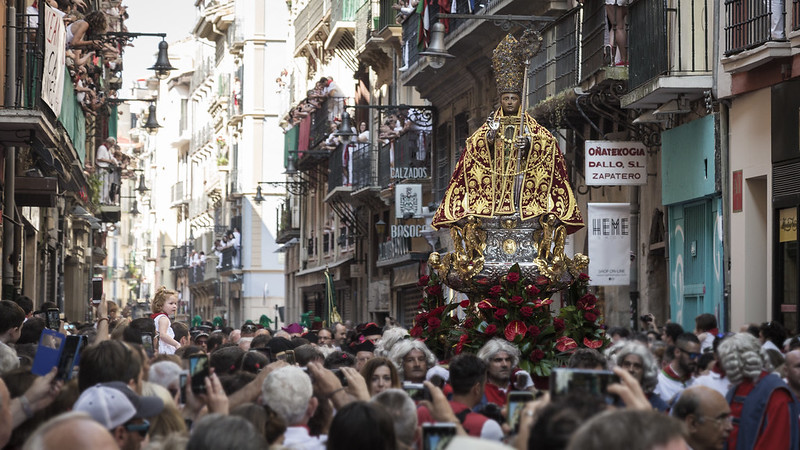
photo by San Fermin Pamplona Navarra
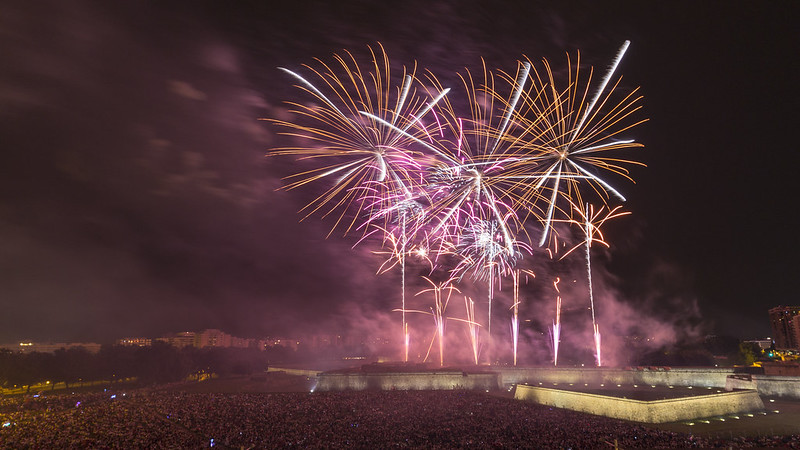
photo by San Fermin Pamplona Navarra
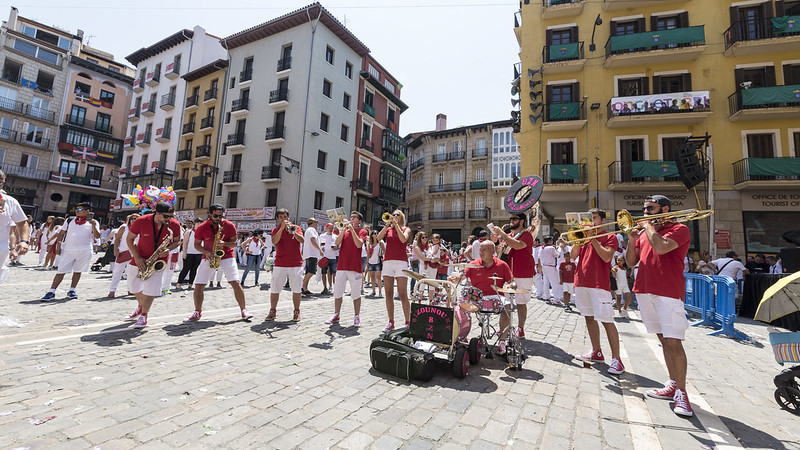
photo by San Fermin Pamplona Navarra
Information
| Name | San Fermin |
| Country | Spain |
| Area | Navarre, Pamplona |
| Date | 2026/07/05 - 2026/07/13 |
| Link |
Upcoming Festivals
Whirling Dervishes Festival Turkey
A Mesmerizing Dance of Divine Love
2025/12/06Mevlana Celaleddin Rumi Commemoration Ceremony ( Şeb-i Arus ) Turkey
A Whirling Journey to Divine Love
2025/12/10Dia de la Virgen de Guadalupe Mexico
A Festival Weaving Faith, Fervor, and Mexican Identity
2025/12/11L'Escalade Switzerland
Geneva’s Grand Winter Festival of Courage, Chocolate, and Community
2025/12/12Umkhosi Wokweshwama South Africa
The Zulu First Fruits Festival—A Sacred Celebration of Land, Ancestors, and Renewal
2025/12/12Lucia Festival (St. Lucia's Day) Sweden
A Festival of Light Illuminating the Nordic Darkness
2025/12/15Las Posadas Mexico
The Luminous Quest for Sacred Shelter
2025/12/22Noche de Rabanos (Night of the Radishes) Mexico
A celebration blending art, farming heritage, and cultural traditions
2025/12/23Chant of the Sybil on Majorca Spain
A Medieval Prophecy Echoes Through Majorcan Christmas
2025/12/23‘Hatajo de Negritos’ and the ‘Hatajo de Pallitas’ Peru
A Christmas Festival of Rhythm, Faith, and Afro-Andean Heritage in Peru’s Ica Region